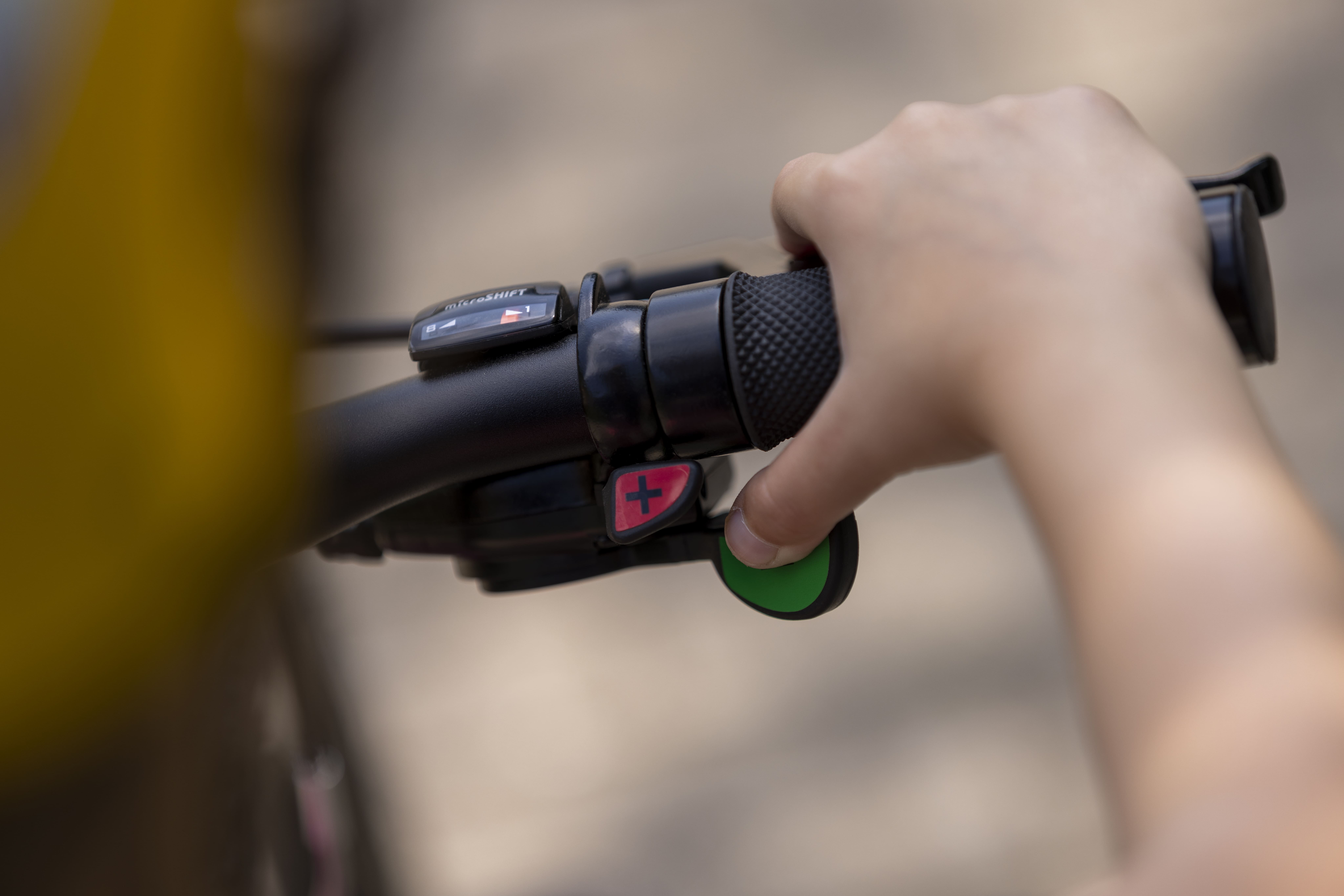How to teach your child to use the gears of a bike?
After you child has become familiar with the bike and gained his/her balance, it's time to teach the child to use the gears on the bike. Although it is not easy at first, it will allow him/her to be more independent, to go further, faster, and have more fun.

User’s tips for dealing with the gears of the bike
It is essential to anticipate any changing gears and to carry it out gradually or "speed by speed". The idea is to avoid breaking the pedaling rhythm and anticipating changes in terrain or obstacles to come. Doing it too late will result in a loss of pedaling efficiency causing the chain to jump on the freewheel.
Changing gears while pedaling in reverse can also cause the chain to drop. Your child will have to learn to pay attention to the bike and listen to the noises it makes. This can be a little difficult to analyze but is the best indicator for proper shifting and improve the lifespan of the mechanics. With a little practice, all children can master shifting, so they can enjoy all their bike rides even more.


How many gears on a child's bike?
At BEMOOV we have chosen to equip our 20- and 24-inch bikes with 8 speeds, using an 8 sprocket cassette on the rear wheel. This number offers a sufficient choice of gears while only needing a single chainring up front. The wide range of sprocket teeth from 11 to 32 allows perfect adaptation to a child’s power output.
Having a single chainring at the front not only reduces the weight of the bike, but also makes it more reliable, since a front derailleur is no longer necessary. It's like Daddy's MTB!
Better yet, having only one chainring allows a child to have only one right-hand lever (shifter) to change the gears. This makes learning to ride a bike much easier, faster, and more fun.
What type of shifter should I use?
In the leisure bike market, two lever systems are present: trigger levers (thumb or indexed) and rotating levers. For practical reasons, BEMOOV bikes have thumb trigger levers. They are not only more reliable than rotating handles, but also more secure, because they are easier to handle for a child.
Preference for trigger gear shifters:
• Easier, because children use their thumbs to change gears. This movement requires much less force than as it does with a twist grip that also impacts the wrist, plus indexing and adjustment are easier.
• More secure, because children can keep a firm grip on the handlebars and even brake simultaneously. With a twist grip, the hand could slip, even more if it is wet or if the grip becomes worn.

Promote learning to shift gears with a BEMOOV bike

At BEMOOV, we are proud to offer colored-coded shift levers. We tested our prototypes with dozens of children and talked to them about our idea to differentiating between speeds, because that is the main problem many children -and adults! – have! The solution is differentiation:
• A red marker with the symbol " ➕ " indicating the chain has changed to a lower sprocket, which means MORE speed, but also MORE effort .
• A green marker with the symbol " ➖ " indicating the chain has moved up to a higher sprocket, signifying LESS speed, but also LESS effort and therefore, an easier gear.
As with the brake colors, these visual guides allow children to learn how about the mechanics of how changing gears work in an instinctive and educational way. The attendant (you) can also guide the child more easily in changing gears, depending on variations in the terrain.




